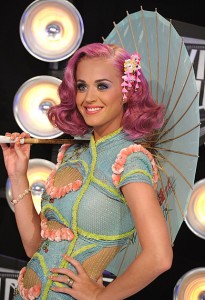Liu Jianhua’s Game Series calls the authenticity of the qipao, and ultimately its cultural meaning, into question. Initially, the qipao was sanctioned by the Chinese government in the early 1900’s as the official dress for women in China. The qipao upheld Chinese national pride by showcasing patterns and designs specific to the Chinese fashion industry while allowing women an increased range of motion.
Chinese women were empowered by the qipao because they could choose the design and cut to show as much of their body as they were comfortable. Affluent women were able to dabble in Western ideals of fashion (by experimenting with Western patterns and designs) without backlash from society because the shape and the cut of the qipao were distinctly Chinese; this distinction placed national identity above the individual appreciation for Western ideals.
The qipao fell out of favor in the 1950’s-1960’s due to Cultural Revolution and the Socialist period that followed under Mao Zedong. The qipao had come to represent over-extravagance and wealth, which was frowned upon during the socialist era. In the 1990’s, however, the qipao underwent a cultural emergence due in part to China’s growing economy and political stability. What truly brought relevance to the qipao was the renewed cultural pride that began in the fashion industry and was consumed by the general public and the West.
introduce an argument first before the detail. also there is no enough room for detailed historical description about qipao in a post
This is where Liu Jianhua’s Game Series becomes important in understanding the peculiar place of the qipao. Currently, the qipao is a cultural symbol but does not have national backing as it did from the 1920’s – 1950’s. As a result, the qipao has become less about empowering Chinese women and upholding national pride as much as it is about the qipao a commodity for mass consumption. While many fashion houses, Chinese and Western alike, are paying their respects to the traditional Chinese dress, they have left out the designs and cuts specific to Chinese culture. good point, are you going to support it?
 (Katy Perry at the Grammy Awards in a Western interpretation of the qipao)
(Katy Perry at the Grammy Awards in a Western interpretation of the qipao)
what does the photo of Katy Perry with Liu Jianhua’s work? I feel confused.
LIu Jianhua purposefully chose to remove the heads of the women he sculpted to show the audience that when we consume the qipao, we are not focused on the people wearing the dress but on the dress itself and its ability to be modernized. He has the women positioned with their legs spread open to show the viewer that the qipao has become a object with which to objectify women. Qipaos now, such as the one worn by Katy Perry at the Grammy Awards, do not provide as much covering for women as they used to. is it better to focus on one image?
 Liu Jianhua, Color Ceramic Series – Game, Ceramic Sculpture 2000, 52 x 52 x 23 cm, LJH30
Liu Jianhua, Color Ceramic Series – Game, Ceramic Sculpture 2000, 52 x 52 x 23 cm, LJH30
In addition, Liu Jianhua purposefully sculpted the women’s bodies without arms to indicate that they are powerless to the men that objectify them, and furthermore that the qipao is powerless against those that interpret it out of the Chinese context. Liu Jianhua chose to put the women on porcelain plates as an “offering” to the viewer. These women, who are headless and powerless, are up for the taking in terms of the male gaze. Their bodies and the designs of the qipao are also available for the fashion industry, both Chinese and Western, to have as much or as little as they want. raised number of good points here which need careful and analytical explanation.
While some might critique Liu Jianhua’s Games Series as extremist, I argue that he is providing a social commentary not only for men, but for Chinese and Western civilization. It is warning against the objectification of women’s bodies, and the dehumanization and dis-empowerment that results. It is a sign that the qipao is not authentically Chinese anymore; it has been interpreted through various lenses within the fashion industry and has lost its origin, at least, in eyes of the average western consumer.
if this is the argument, then introduce it at the beginning.
 (Liu Jianhua, Color Ceramic Series – Game ,Ceramic Sculpture 2000, 61 x 61 x 15 cm, LJH12)
(Liu Jianhua, Color Ceramic Series – Game ,Ceramic Sculpture 2000, 61 x 61 x 15 cm, LJH12)
Sources used:
http://china.shanghartgallery.com/artists/liujianhua/default-a.htm#BIO (photographs)
http://www.culturebase.net/artist.php?1487 (the inspiration for Liu Jianhua’s Games Series)
http://www.liujianhua.net/entext_details.aspx?id=10 (Liu Jianhua’s biography)
https://blackboard.bowdoin.edu/bbcswebdav/pid-507079-dt-content-rid-1515700_1/courses/ASNS2076.GWS2076_2016S/qipao%20slides%281%29.pdf (Professor Tsui’s Qipao powerpoint slides)
